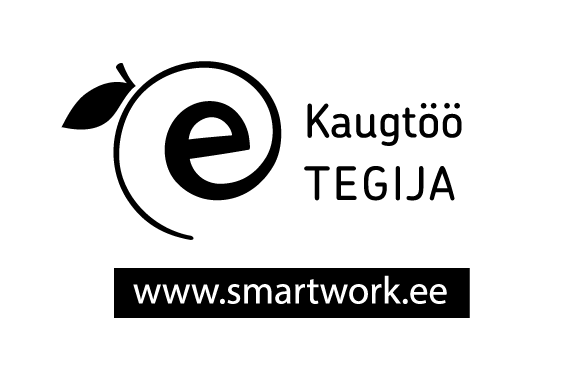Перевести события:
7. detsembril kell 11.00 toimub Eesti Kirjandusmuuseumi folkloristika osakonna ja Eesti-Uuringute Tippkeskuse usundiuurimise töörühma seminar.
Evy Johanne Håland (Norra statsstipendiat) tutvustab oma suuremat võrdlevat uurimisprojekti „Ohtlik elu. Tervis, tervendamine, valu ja soolisus tänapäeva ja vanas Kreekas".
Tervendamisrituaalide analüüsile pühendatud uurimuses asetub fookusse naise roll. Håland küsib, kuidas saame üldse mõista meeste poolt jäädvustatud selliseid antiikseid tervendamisrituaale, mida sooritasid naised. Üheks võimalikuks lahenduseks on jälgida tänapäevaseid ravirituaale ning võrrelda saadud informatsiooni olemasoleva vana andmestikuga. Tänapäevaste ja antiiksete elu kulgu saatvate religioossete pidustuste ja rituaalide võrdlemine, sealhulgas soo aspektist, toob esile naise perspektiivi. Uurimuses analüüsitakse religioosse tervendamise sotsiaalset tähendust ning meeste ja naiste rolle tegelikes rituaalides, samuti suhteid koduse naiste sfääri ning ametliku meeste sfääri vahel.
Ingliskeelne seminar algab Microsoft Teamsis 7. detsembril 2020 kell 11.00
Kõik huvilised on oodatud!
Osalemiseks palume saata meil mare.kalda@folklore.ee või maris.kuperjanov@folklore.ee
Seminari toetavad uurimisprojekt “Folkloori narratiivsed ja usundilised aspektid” (EKM 8-2/20/3) ja Euroopa Liidu Euroopa Regionaalarengu Fond (Eesti-uuringute Tippkeskus, TK-145)
*
The next online lecture of the Folklore Department of the ELM and the Centre of Excellance in Estonian Studies will be given on Monday, 7th December at 11 a.m. via Microsoft Teams by dr. Evy Johanne Håland and will be entitled “The Dangerous Life: Gender, Pain, Health and Healing in Modern and Ancient Greece, a Comparison”.
Based on a comparison between modern and ancient religious festivals and rituals performed during life-cycle passages, and the gendered spheres they represent, the research aims to shed fresh light on both the ancient and modern worlds from a female perspective. To reach this goal the project compares data from fieldwork on modern pilgrimage festivals and other healing rituals in Greece with ancient sources through an analysis that concentrates on assumed characteristics connected with healing in the two periods. Thus the research analyses both the social meaning of religious healing as well as the roles of men and women in the actual rituals, and accordingly investigates the relationship between the domestic or female sphere and the official or male sphere.
To join please contact mare.kalda@folklore.ee
or maris.kuperjanov@folklore.ee
Lecture is supported by the research grant EKM 8-2/20/3 and by the Centre of Excellance in Estonian Studies (TK-145).
*
The Dangerous Life: Gender, Pain, Health and Healing in Modern and Ancient Greece, a Comparison
Evy Johanne Håland
The central theme of this multidisciplinary, cross-period project is women’s role in connection with healing in ancient and modern Greece. The research investigates religious rituals and gender by focusing on an important area within women’s purview—healing.
How can we come to understand such mainstays of ancient culture as its healing rituals, when the male recorders did not and could not know or say much about what occurred, since the rituals were carried out by women? A way of tackling this dilemma is to attend similar healing rituals in modern Greece, carried out by women, and compare the information with ancient sources, thus providing new ways of interpreting the ancient material we possess.
Carrying out fieldwork—being present during, often, enduring rituals within cultures, despite other changes—teaches one whole new ways of looking at written and pictorial records of such events. Based on a comparison between modern and ancient religious festivals and rituals performed during life-cycle passages, and the gendered spheres they represent, the proposed work therefore aims to shed fresh light on both the ancient and modern worlds from a female perspective. To reach this goal the project compares data from fieldwork on modern pilgrimage festivals and other healing rituals in Greece with ancient sources through an analysis that concentrates on assumed characteristics connected with healing in the two periods.
Thus the research analyses both the social meaning of religious healing as well as the roles of men and women in the actual rituals, and accordingly investigates the relationship between the domestic or female sphere and the official or male sphere. Because scholars working on ancient history generally do not carry out fieldwork, the innovating method of this research breaks new ground opening up for a new field.
By bringing ancient and modern worlds into mutual illumination, the research also has relevance beyond the Greek context both in time and space.
Chapter Titles:
1: Introduction: Rituals of Health and Healing in Greece
2: Healing Water: The “Life-Giving Spring” at Athens and Beyond
3: Healing Caves and Their Deities
4: Pilgrimage in Greece: From Modern Tinos to Ancient Epidauros and Beyond: Letters, Accounts and Inscriptions Telling of Healing Rituals and Successful Recoveries
5: Pilgrimage to the Tombs of Healing Saints and Ancient Healing Mediators
6: From Modern to Ancient Deities and Their Sacred Animals
7: Colours, Smell, Plants, Herbs and Other Healing Remedies
8: Healing and Protective Amulets, Votive Gifts and Thank Offerings
9: Healing Dance and Movement
10: Conclusion
